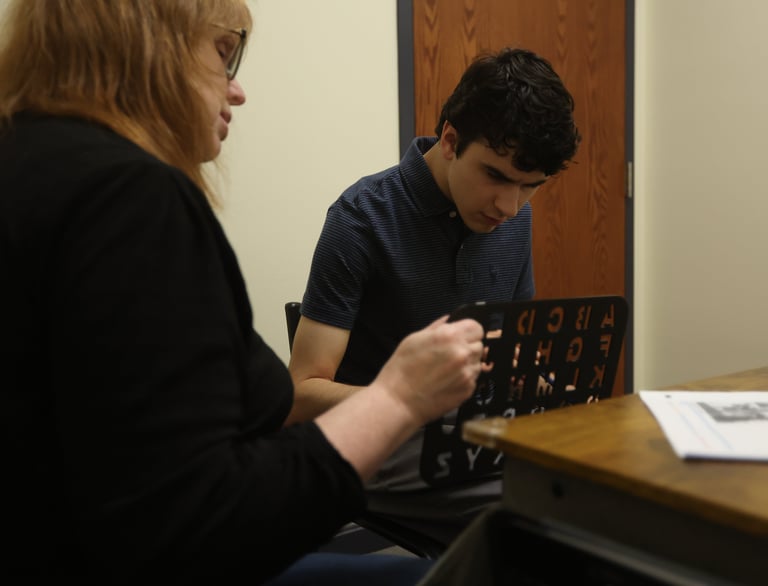

What is Spelling to Communicate?
"Spelling to Communicate (S2C) teaches individuals with motor challenges the purposeful motor skills necessary to point to letters to spell as an alternative means of communication (AAC). The goal is to achieve synchrony between the brain and body. Skilled and rigorously trained communication partners teach purposeful motor skills using a hierarchy of verbal and gestural prompts. As motor skills improve through consistent practice, students progress from pointing to letters on letterboards to spell to typing on a keyboard. Accordingly, communication moves from concrete to abstract as motor skills progress."
The International Associate for Spelling as Communication
Learn more about Spelling to Communicate
Frequently Asked Questions
What is "Presuming Competence?"
We presume our Spellers can and want to learn age-appropriate information.
Why do we use the term nonspeaking instead of non-verbal?
The word nonverbal means without words. Using the term nonverbal rather than nonspeaking implies that nonspeakers lack them. Nonspeakers have words but lack a reliable motoric way to express them and speech is not their primary means of communication.
What is the difference between nonspeaking, minimally speaking, and unreliably speaking?
Nonspeakers may produce a few words and have difficulty communicating through speech. Minimal speakers can say some words or phrases but can not engage in robust and flexible communication. They can often express wants and needs and give short answers to questions. Unreliably speakers may have the ability to speak, but are not always able to use speech intentionally or for communication. They may repeat words, or script. Unreliable speakers do not always mean exactly what they say.


